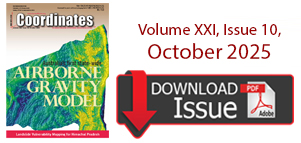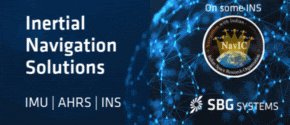| UAV | |
UAV
AIBOT achieves eVTOL milestone at Norton
AIBOT has successfully conducted a f light test at the Unmanned Aircraft Systems (UAS) Center at San Bernardino International Airport (SBD) under the newly established Norton Test Range. The flight was conducted through a partnership with the FAA’s UAS Test Range: Alaska Center for Unmanned Aircraft Systems Integration (ACUASI) for operations on the Norton Test Range. This marks a significant advancement in the regulatory and technical progress needed to bring autonomous aviation closer to commercial deployment. The successful test validated the performance, safety, and operational feasibility of its aiEVTOL technology within an airport environment. aibot.ai
Epirus introduces Leonidas H2O
Epirus has announced the introduction of Leonidas H2O, a, high-energy, high-power microwave (HPM) system developed to counter boat motors, unmanned surface vessels (USV) and unmanned aerial vehicles (UAV). The system is built using the scalable Leonidas energy-based, high-power microwave technology platform. It demonstrated effectivity against vessel motors at record ranges during the U.S. Navy’s Advanced Naval Technology Exercise Coastal Trident (ANTX-CT) program, during which the system was tested against four commercially available vessel motors ranging from 40 to 90 horsepower at a multitude of ranges. www.epirusinc.com
Spoof-proof drone delivery
Japan’s CORE Corporation, together with ACSL Ltd. and Rakuten Group, recently conducted a demonstration of anti-spoofing capabilities using Japan’s Quasi-Zenith Satellite System (QZSS) Navigation Message Authentication (QZNMA) service.
At the center of the project was the newly developed ChronoSky PF2-AE. The platform brought together CORE’s new QZNMA-enabled Cohac∞ Ten++ GNSS receiver and ACSL’s PF2 AE delivery drone. Project partners simulated disaster-relief supply missions in Chichibu City, Saitama Prefecture, demonstrating real-world resilience against spoofing attacks.
During the demonstration, two distinct operational scenarios under controlled spoofing conditions were evaluated. In the first scenario, where only a subset of satellite signals was spoofed, the drone quickly detected the anomaly, alerted its ground control station (GCS), and safely continued its autonomous flight. In the second, where all satellite signals were compromised, the drone again detected the spoofing, alerted the GCS, and transitioned to manual flight, allowing the operator to complete the delivery mission.
EagleView enhances Its Drone Solution
EagleView is now expanding its drone offering to provide insurance carriers with more complete options for obtaining property inspections, property analysis reports, and repair estimates.
The company’s current offering, EagleView AssessTM, uses American made drones to capture imagery and then harnesses machine learning and artificial intelligence to detect roof abnormalities. This helps validate and resolve claims, while also helping reduce human errors and subjectivity. eagleview.com
SPH Engineering launches UgCS Open
SPH Engineering has launched UgCS Open, a free version of its industry leading software. It provides the same 3D flight planning, terrain aware automation, and mission control capabilities as the paid version, with just a few limitations. The new product is making advanced drone f light planning more accessible. www.sphengineering.com
AirWarden drone detection system
AeroDefense has introduced AirWarden Essentials, a drone detection system designed to provide cost-effective airspace monitoring through networked Remote ID broadcasts. It aims to enhance situational awareness for organizations concerned about unauthorized drone activity.
It operates using a small receiver, which can be installed on a building or pole within ten minutes. The device connects to a cloud-based command console via LTE or ethernet, offering users real-time drone and pilot location alerts through text, email and on-screen notifications. The technology is based on AeroDefense’s Collaborative Drone Detection Network, developed under a Department of Defense contract. It allows multiple agencies to share a common operational picture, improving coordination in responding to potential drone threats. aerodefense.tech
Saildrone deploys tech for GPS-denied environments
Saildrone has successfully demonstrated operations in the Middle East with new hardware and software capabilities that allow it to operate in a GPS-denied environment.
The US Navy established Task Force 59 in 2021 as part of the US Naval Forces Central Command (NAVCENT) and US Fifth Fleet to advance the operational employment of unmanned systems and artificial intelligence in fleet operations. Due to recent regional events, GPS jamming and spoofing have hindered unmanned operating systems in the area.
Saildrone now has the ability to autonomously operate in GPS-denied or spoofed maritime environments. Its innovative solution leverages multiple forms of localization, ensuring seamless operation without relying exclusively on satellite systems, and allowing operations to continue in contested environments. www.saildrone.com












 (No Ratings Yet)
(No Ratings Yet)






Leave your response!